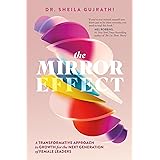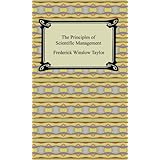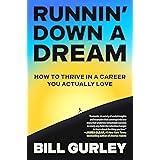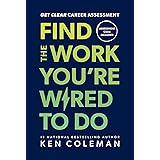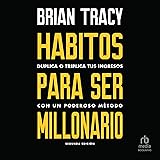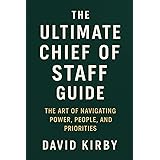Many job seekers wonder about current resume trends. Old strategies often lead to overlooked applications. Knowing what works today is crucial for career success. This article shares updated **resume tips** for your **job search in 2025**. It expands on the valuable advice presented in the video above. These modern approaches help your resume stand out. They boost your chances of landing that dream job.
Customizing Your Resume for Each Job Application
Sending a generic resume is a common mistake. A single document will rarely impress. Recruiters receive many applications daily. Your resume must clearly match the job. Imagine applying for a marketing role. Your resume should highlight marketing skills. Generic resumes are easily filtered out by applicant tracking systems (ATS).
Each **job application** requires a tailored approach. The job title should be included. Specific keywords are also vital. These keywords are found in the job description. Weaving them naturally into your resume helps. It signals a strong fit to both machines and humans. You can even save files with specific job titles. For example, “Your Name – Senior Marketing Manager – Acme Corp.”
Replacing the Objective Statement with a Professional Summary
The traditional objective statement is now outdated. It focuses on what you want. Modern resumes focus on what you offer. An executive or **professional summary** is preferred. This section sits at the top of your resume. It quickly highlights your value.
Three or four key accomplishments can also be used. These achievements should be impactful. They must grab the reader’s attention quickly. This section does not need a label. Just place your summary or accomplishments prominently. They will immediately show your capabilities. This approach makes your resume more engaging.
Omitting Personal Information and References
Your full home address is no longer needed. Only your city and state are typically required. Some job seekers even omit this for remote roles. This protects your privacy. It removes potential biases.
The phrase “References available upon request” is also unnecessary. References are usually requested electronically. This happens much later in the hiring process. This space on your resume can be used better. It allows for more impactful content. Removing it creates a cleaner look.
Highlighting Accomplishments, Not Just Responsibilities
Listing daily duties is not effective. Phrases like “responsible for” should be removed. Employers want to see your impact. Focus on achievements and results. This approach shows your contribution.
Quantifiable information is very powerful. Did you increase sales by 15%? Did you reduce costs by $10,000? Use numbers whenever possible. Think about annual goals or KPIs. Describe the outcome of your projects. Show what you did for your team or company. Save specific details for interviews. Your resume should present the compelling results.
Including Relevant Work Experience (10-15 Years)
Every single job you’ve ever held is not necessary. A focused approach is more effective. Include relevant positions from the past 10 to 15 years. This keeps the resume concise. It highlights your most current skills. Older roles might still be important. They can show a complete career path.
A separate section can be created. Label it “Additional Professional Experience.” Here, you can list older employers. Include the job titles held. Dates might be omitted if very far back. This provides context without cluttering the main experience section. It presents a clear progression for your **career path**.
Embracing a Two-Page Resume (When Appropriate)
The strict one-page rule is largely gone. A two-page resume is now widely accepted. This is especially true for those with 10 or more years of experience. More space allows for deeper accomplishment details. It also provides room for skill sections. However, brevity is still key.
Keep bullet points concise. Focus always on results. Do not add fluff to reach a second page. Every word must add value. A well-crafted two-page resume shows depth. It demonstrates extensive experience. It will not be seen as too long if the content is strong.
Opting for a One-Column Resume Format
Some resume templates feature multiple columns. These often include shaded sidebars. This design can look modern. However, many **applicant tracking systems (ATS)** struggle with them. ATS are software programs that scan resumes. They help recruiters manage applications. Multi-column formats can cause parsing errors.
A simple, one-column format is generally safer. It ensures your information is read correctly. This format is easily digestible by ATS. If a one-column layout seems too plain, add touches of color. Use subtle shading. These elements can enhance visual appeal. They do not compromise ATS compatibility. Your information is preserved. This increases your chances of being seen.
Understanding the Evolving Role of the Resume
The traditional hiring process has changed. Resumes are not always the first touchpoint. Today, candidates are often discovered elsewhere. **LinkedIn profiles** are a common starting point. Referrals also play a significant role. A recruiter might find you on LinkedIn. They might then request your resume. This shift means your online presence is crucial.
After reviewing a resume, recruiters often check LinkedIn. Your “About” section is important. Other professional details are also reviewed. This gives a broader picture of your profile. It shows what you do beyond formal work. Your online presence supports your resume. It helps create a cohesive professional brand. This integrated approach strengthens your **job search** efforts.
Using Professional Yet Conversational Language
Old resumes used overly formal language. Stiff, corporate jargon was common. Today, a professional yet conversational tone is preferred. This makes your resume more engaging. It allows your authentic voice to come through. It helps you connect better with readers.
For instance, “Technical Skills” might become “Tech Stack.” This sounds more current. It feels less rigid. The goal is to be clear and approachable. This balance shows professionalism. It also makes your resume memorable. It reflects modern communication styles.
Navigating AI in Applicant Tracking Systems
Artificial intelligence is impacting recruiting. AI tools are integrating into ATS. These systems become smarter. They can analyze resumes more deeply. They identify relevant keywords and skills. Understanding this integration is becoming essential. It helps you optimize your resume for these advanced tools. Staying informed on **AI trends** in hiring is wise.
AI can help with your **job search** too. Tools can assist with keyword optimization. They can suggest phrasing improvements. Keeping up-to-date with these advancements is key. It ensures your resume remains competitive. It helps you stand out in the evolving job market of 2025.


